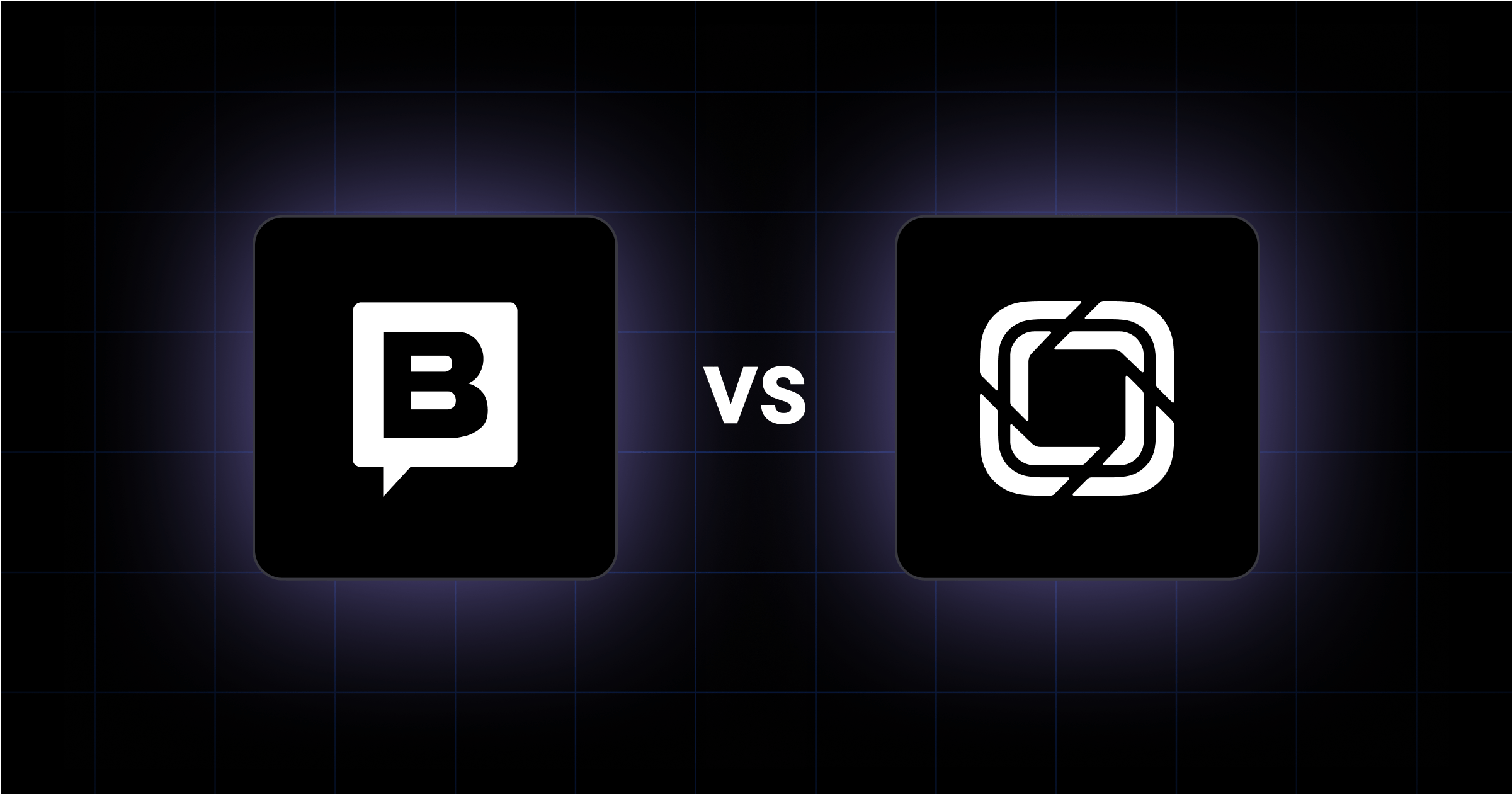Most RFPs for website redesigns fall short. They focus heavily on visual refreshes while overlooking the systems, workflows, and scalability a modern B2B website demands.
As a result, companies invest in a site that looks better, but still relies on developers for every update. It doesn’t support agile marketing or reflect their product’s complexity or growth stage.
In this guide, we’ll show you how to write an RFP that attracts the right partners, and outlines real technical and operational needs.
What a Website Redesign RFP Should Do
Writing an RFP is your chance to align internal goals, set clear expectations, and attract the right partners who understand the complexities of B2B growth.
An RFP clearly connects your business goals to the technical and operational needs of your future platform. It anticipates collaboration across marketing, design, and development, and it prioritizes outcomes over aesthetics.
Here’s what an RFP should accomplish:
- Clarify the “Why” behind the redesign: Are you stuck with a dev-reliant CMS? Is your brand scaling faster than your site architecture? Is SEO performance lagging due to slow load times or poor UX? An RFP should put these challenges front and center.
- Translate team pain points into platform requirements. For example: If marketers can’t publish without dev help, you need a modular content model and an intuitive CMS, not just a design refresh.
- Set the tone for strategic partnership: The best agencies aren’t order takers. They’re collaborators who will challenge assumptions, recommend scalable solutions, and align your redesign with long-term marketing operations.
- Enable vendors to propose smarter solutions: The more context you provide on your stack, team structure, GTM motion, and priorities, the better your responses will be.
In short, your RFP should create clarity, open up innovation, and lay the foundation for a website that grows with your team.
Common Mistakes in Website Redesign RFPs
Most RFPs fall short because they don’t reflect how B2B teams actually use their websites. Here are some of the most common issues we see:
Focusing Only On Visuals
Too many RFPs emphasize color palettes, design inspiration, or branding updates. But say nothing about CMS limitations, content ops pain points, or dev workflows. A beautiful site that’s impossible to update won’t support growth.
Leaving Out the Tech and Team Context
Without clarity on your current stack, internal skill sets, or team workflows, agencies can’t make thoughtful recommendations. If you're considering a headless CMS or composable setup, say so. If you're not sure, invite input.
Scoping a “One-And-Done” Build
In fast-moving B2B environments, your site should evolve in sprints, not wait 9 months for a grand relaunch. But many RFPs still bake in waterfall timelines that stall momentum and kill iteration.
Failing to define success metrics
If you can’t measure impact, you can’t evaluate your investment. Are you optimizing for SEO performance? Editor autonomy? Conversion rates? Make sure to include it in your RFP for website redesign.
Not Accounting For Scalability
Whether it's page templates, localization, or new product launches, your site needs to be able to adjust. An RFP that doesn’t mention future growth sets you up for another costly redesign in a year or two.
How to Write an RFP for a Website Redesign
Below is a breakdown of the key components your RFP should include, especially if you're redesigning for scale, speed, and marketing autonomy.
1. Project Overview and Goals
Give a high-level summary of what you’re looking to achieve. Don’t just say “new site”, but connect your request to specific business outcomes.
Example goals include:
- Increase publishing speed for the marketing team
- Improve site performance and SEO
- Support a UX redesign with scalable design components
- Reduce reliance on engineering for content updates
2. Current Website Challenges
Paint a clear picture of where you are today. This helps potential partners diagnose gaps and propose more relevant solutions.
Mention:
- Your current CMS and tech stack
- Known issues (e.g., slow load times, clunky editor experience, poor SEO performance)
- Team workflows: Who manages content? Who owns the site?
3. Scope of Work
Define what you expect from the redesign. Go beyond “visual refresh” and outline functional, operational, and performance needs.
Possible elements include:
- Site architecture and UX strategy
- Modular component design
- CMS migration or integration
- Design system development
- SEO and analytics setup
- Accessibility and performance optimization
- MVP first, with phased feature rollouts
4. Functional and Technical Requirements
This is where the rubber meets the road, especially for dev and ops stakeholders. The areas to clarify include:
- Preference for headless CMS or flexibility to explore (e.g., Contentful, Sanity, Storyblok)
- Performance expectations (Core Web Vitals, Lighthouse scores)
- Integration needs (CRM, analytics, product platforms)
- Future-proofing considerations: localization, personalization, content scaling
5. Content Strategy and Migration
Let agencies know what content exists, what needs to be updated, and how you’ll handle ownership and distribution.
In your RFP, mention:
- Approximate number of pages to migrate
- Whether existing content is being rewritten
- Internal content team or need for agency support
- Structured content models vs. free-form pages
6. Success Metrics
Vendors perform best when they understand how you define success. Tie these to your broader marketing and growth goals, such as improving website ROI.
Your goals might be any of the following:
- Achieve 90+ Lighthouse score at launch
- Reduce time-to-publish by 50%
- Grow organic traffic by 25% in 6 months
- Improve conversion rate on key landing pages
7. Budget and Timeline Expectations
Be transparent here. Without it, you risk misaligned proposals. If you’re unsure, include a budget range or ask for phased options.
- Estimated budget range (even ballpark)
- Ideal kickoff and launch timeline
- Openness to MVP/iterative builds vs. full relaunch
8. Vendor Requirements
Clarify what kind of partner you're looking for. Remember: You're not just hiring for design, but for strategic impact.
You can request:
- Experience with high-growth B2B clients
- Proven track record with CMS migrations and composable builds
- Ability to advise on systems, not just implement specs
- Portfolio of work that supports velocity, UX, and SEO outcomes
3 Examples of How to Structure Your RFPs
Here are three hypothetical examples of how growth-stage B2B companies can approach their redesigns.
1. Fintech Preparing for Global Expansion
A fintech company gearing up for Series B was running into major publishing bottlenecks.
Their dev-owned WordPress site made it nearly impossible for regional teams to launch localized campaigns at speed.
In their RFP, they clearly prioritized modular design, multilingual capabilities, and a headless CMS to support future growth.
They also outlined a phased launch strategy, requesting an MVP within 90 days, followed by regional rollouts. This allowed for rapid value delivery without waiting for a full build.
2. SaaS Company Rebranding After Product Expansion
A SaaS company entering Series C was preparing to launch new products and expand into new markets. Their website no longer reflected their broader offering or evolving positioning.
In their RFP, they clearly outlined the need for a restructured site architecture to support multiple product lines and audiences.
They also highlighted the need for a flexible content model that would allow their marketing team to create product pages, case studies, and thought leadership content without developer support.
3. Healthtech Startup Modernizing Ahead of Series A
A healthtech startup realized their static, brochure-style site wasn’t cutting it as they prepared for Series A fundraising. Their RFP focused on measurable performance improvements, like faster load times, improved UX, and more intuitive content editing.

How Webstacks Approaches RFP Collaboration
As a web design agency, Webstacks helps shape RFPs.
When clients involve us early, we help turn vague requirements into actionable plans. We ask the right questions about team structure, content velocity, SEO goals, and platform constraints, so we can co-create a roadmap that aligns with your business outcomes.
We often recommend an MVP-first approach: launching a high-impact version of your site quickly, then layering in more complex functionality through agile iteration. This reduces risk and aligns with how growth-stage teams actually operate.
Whether you’re migrating off a legacy CMS, building a design system from scratch, or scaling globally, we translate technical opportunities into marketing wins. We’ve helped companies like Calendly, ServiceTitan, and Snowflake ship composable redesigns in record time.
Redesigns are hard to get right. But with the right partner, they can be transformational. We’re here to consult, collaborate, and build a site that works as a growth lever for your business.
Final Checklist for Your Website Redesign RFP
Before you hit send, make sure your RFP checks all the important boxes. Here’s what it should include:
- Clearly defined business goals tied to performance, marketing velocity, or UX
- A summary of current platform challenges and pain points across teams
- A request that includes architecture, content ops, and CMS strategy
- Openness to collaboration on tech stack, timelines, and phased delivery
- Functional requirements tied to outcomes (e.g., faster publishing, better SEO)
- Content migration and editorial needs that reflect internal workflows
- Success metrics that go beyond launch such as scalability and autonomy
- Vendor criteria that prioritize B2B experience and systems thinking
A great RFP also tells the story of how your site needs to evolve. That’s what gets the attention of the right partners, and sets the stage for a redesign that actually drives growth.
Thinking About a Redesign?
If your website still feels like a brochure, or worse, a bottleneck, it’s time to consider what a redesign can do for your business.
At Webstacks, we help companies turn outdated sites into composable growth engines. Whether you're exploring a CMS migration, planning for a rebrand, or scaling internationally, we’ll help you map a path forward, and build the systems that support your next stage.




